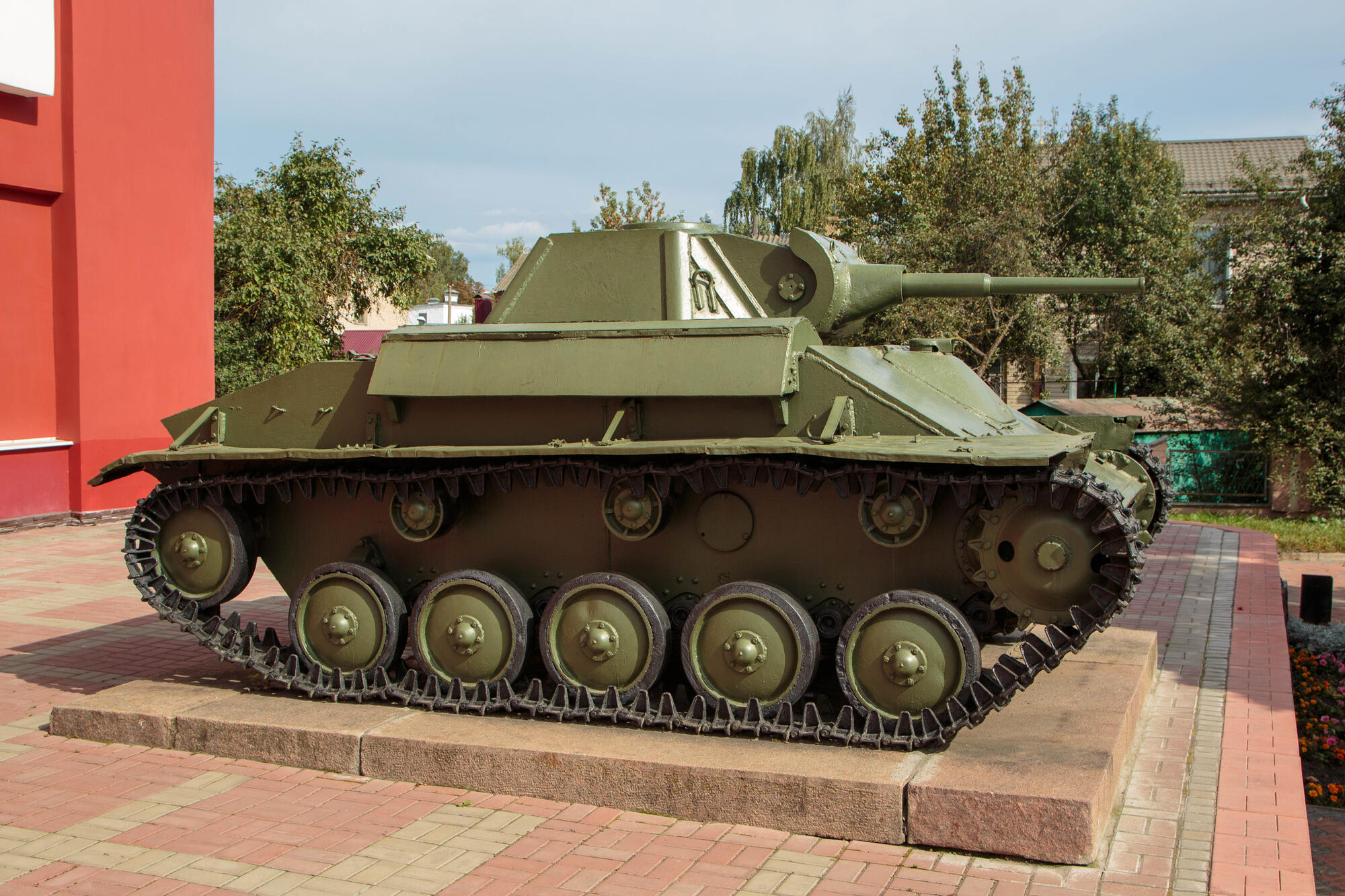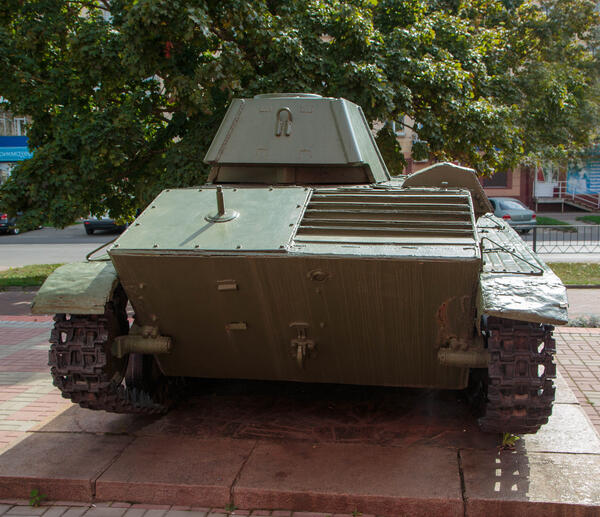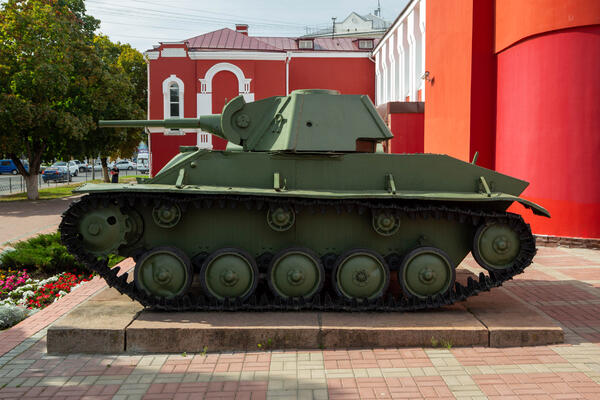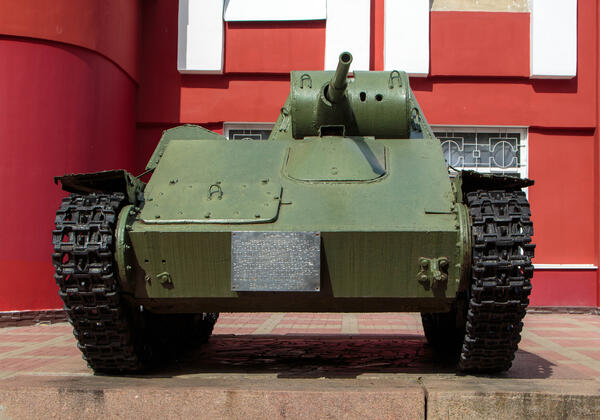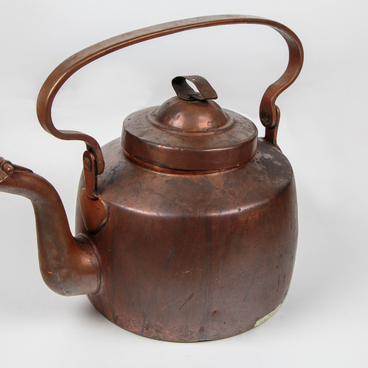The development of the T-70 light tank began in the autumn of 1941 when the Great Patriotic War was already under way. The work was carried out at the Gorky Automobile Plant under the leadership of the Soviet engineer Nikolay Alexandrovich Astrov. During the war, it was decided that light tanks were inadequate and their mass production was canceled, so this tank became the last Red Army armored vehicle of this type.
In January 1942, the T-70 tank was put into service. The combat vehicle received a more powerful engine — two GAZ-11 automotive engines. As a result, it could carry more weight, and it became possible to equip it with better armor.
The T-70 received a new turret with a 45-mm gun. At the same time, the crew of the light tank remained relatively small, consisting of two soldiers, just like the one of the T-60. The tank was produced at several factories until October 1943. A total of 8,231 tanks were manufactured.
In the second half of the Great Patriotic War, the T-70 was rarely used for encounter tank battles and even for infantry support due to its thin armor. At the same time, this armored vehicle continued to be used as a reconnaissance tank, as well as a vehicle for cavalry support.
The T-70 tank took part in the battles for the city of Oryol. It was installed in the Oryol Tankers’ Square on August 5, 1943 in memory of the fallen tank crewmen of the 17th Guards Tank Brigade. The brigade was formed by order of the People’s Commissariat of Defense of the USSR on December 8, 1942 on the basis of the 157th Separate Tank Brigade.
At the beginning of 1943, the unit took part in battles on the southwestern front: in February, the brigade fought with units of the II SS Panzer Corps for the liberation of Pavlograd in the Dnipropetrovsk region and covered retreating rifle units. In August 1943, the 17th Guards Tank Brigade fought for the city of Oryol. Subsequently, to honor its accomplishments, the brigade was named after the city — the 17th Orlovskaya Guards Tank Brigade.
In September 1944, the
formation participated in battles near the Polish town of Serock. In 1944–1945,
by three decrees of the Presidium of the Supreme Soviet of the USSR, the
brigade was awarded the Order of the Red Banner, the Order of Suvorov 2nd Class, as well as the Order of Lenin.
